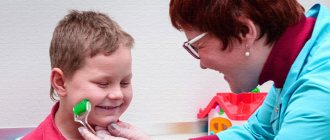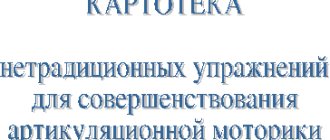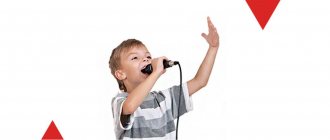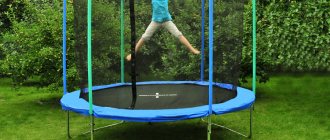Fifth complex (age 10 months – 1 year 2 months)
- Flexion and extension of arms (“boxing”) with rings while standing or sitting.
- "Sliding steps."
- Back massage.
- Turn in one direction or the other from back to stomach.
- Raising the body vertically from a position on the tummy, while the child is supported by the arms.
- Tilt and straightening of the torso.
- Raising the straightened legs to the stick.
- Abdominal massage.
- Sitting down, while supporting the arms spread shoulder-width apart (with a stick).
- Squatting, supporting the child by the arms with rings.
- Tense arching.
- Circular movements with handles with rings.
- Sitting down independently, with the knees fixed, or with the support of the baby by one hand.
Exercises 3, 4,7, 8, 9 are performed in a horizontal starting position. Exercises 10 and 13 are performed according to verbal instructions.
How to teach your baby to exercise?
It’s unlikely that the baby will like traditional “adult” boring exercises, so it’s worth coming up with something more interesting for the baby.
Parents will have to use their imagination and make exercise a fun, exciting game. Hardening
Children's hardening can begin from a very early age. How to start hardening correctly is described in a special material.
For example, not just walk on heels and toes, but walk “like a fox,” “like a bear,” “jump like a bunny.” “Each exercise should be performed by the parent himself and should be done cheerfully, with excitement, in order to interest the baby. Rhymes help the child to better understand the exercises and make morning exercises more fun and interesting. Cheerful, upbeat music also contributes to a good mood,” explains Sergei Polyakov, head of the exercise therapy department at the Scientific Center for Children’s Health of the Russian Academy of Medical Sciences.
The importance of morning exercises in the first junior group of preschool educational institutions
Morning exercises are an element of the daily routine designed to strengthen and maintain the health of children, raise their emotional tone and set them up for further activities.
Goals and objectives of morning exercises for children 1.5–3 years old
The educational goals of morning exercises are universal for preschoolers of any age and boil down to:
- formation, development and improvement of motor skills (for children 1.5–3 years old, this goal is the dominant one, since younger preschoolers are just learning to coordinate their movements, determine the direction of movements of their arms, legs, and torso);
- promoting health (forming correct posture, preventing flat feet, developing a beautiful gait);
- fostering a culture of health (children learn to take care of their health and learn the basics of physical education);
- stimulating interest in sports;
- developing the ability to coordinate one’s actions with the actions of other people;
- nurturing personal qualities (determination, independence, hard work).
Morning exercises create a positive emotional mood in children
To achieve the goals set in the first junior group of a preschool educational institution (DOU), the following tasks are aimed at:
- “awakening” the baby’s body from sleep (even taking into account the fact that preschoolers walk or drive some distance to kindergarten, many of them are in a sleepy state due to early rise);
- activation of the cardiovascular and respiratory systems of the body, organs and channels of perception of the surrounding world (mainly through running and jumping);
- strengthening the musculoskeletal system of children (through repetition of exercises to train the muscles of the shoulder girdle, torso, arms and legs);
- increasing the performance of children (gymnastics helps saturate tissues and organs with oxygen, which means children become more energetic);
- ensuring an organized start to the day (children perform movements together, and all subsequent routine moments in kindergarten also “by inertia” occur harmoniously);
- switching kids to joint activities (even if during the gathering of children in a group the children were playing different games and it was almost impossible to distract them, gymnastics will allow them to switch to a common activity);
- acquaintance with different sports (children not only learn the name, but also correlate the verbal description with the image, try on some sports activities, for example, skates).
Charging can be combined with hardening
It is best to finish the exercise with a water procedure - wiping, dousing or showering. But at the same time, it is necessary to strictly follow the rules of hardening: - All hardening procedures carried out must correspond to the age of the child. — Once you start, do hardening constantly, regularly, at the same time. — Introduce all changes in temperature and duration of the hardening procedure to the child’s body carefully and gradually. - Carefully monitor the child’s mood and well-being. If the baby does not like the procedure, it will be very difficult to accustom him to hardening. — Be sure to periodically consult with your pediatrician and discuss the baby’s physical condition with him. Conclusion
: it’s very easy to accustom kids to exercise – just structure the activities in the form of a game appropriate to the child’s age. Do exercises for all muscle groups with it and try to combine exercises with hardening.
Tags:
- Home workouts
- Morning
- Preschoolers
- Pupils
To leave a comment you must be an authorized user
How do exercises differ for children of different ages?
Children three to four years old
love play situations with clearly defined roles and a clear plot.
Therefore, games are selected for them with simple and specific content, for example, “the geese went for a walk, the wolf scared them, and they ran home.” At five or six years old,
children develop a desire to compete with each other, so games for them need to be made more complicated and an element of competition introduced into them.
For children six to seven years old,
games should contain the most varied and complex movements: running, climbing, jumping, and an adult should demand their correct execution and interest the child in the end result.
Fourth complex (age 6-10 months).
- Crossing the arms on the chest with support from the rings.
- Alternate and joint flexion of the legs and their extension (so-called “sliding steps”).
- Turn to the right from the back onto the tummy without support from the handle.
- Massage of the tummy, back.
- Crawl.
- Sitting the baby down with support by holding the arms out to the sides.
- Passive raising of straight legs.
- Circular movements with the handles.
- Active exercise - tense arching.
- Turn left from back to tummy.
- Active exercise – raising the body (position on the stomach), supporting the child by straightened arms.
- Sitting down with support by the handles, which are spread shoulder-width apart (active exercise).
All exercises in this complex are performed in a horizontal starting position, with the exception of the “boxing” exercise (at 8 months of age, when the child sits confidently without support, it can be performed in the starting position while sitting).
Second complex (age 3-4 months)
- Hand massage (stroking).
- Passive crossing of arms over chest.
- Massage of the lower extremities (rubbing, stroking, kneading).
- Back massage (kneading and stroking).
- Active-passive exercise - turn to the right from back to stomach.
- Reflex exercise - swimmer position.
- Massage (rubbing and stroking) the abdomen.
- Massage (patting and rubbing) of the feet.
- Reflex exercises for the feet.
- “Boxing” - passive extension and flexion of the arms.
- Chest massage (vibration).
- Turn left from back to stomach.
For all exercises, the starting position is horizontal.
Third complex (age 4-6 months)
- Crossing arms over chest.
- Foot massage.
- A passive exercise that imitates cycling movements (“sliding steps”).
- Turn to the right from back to tummy.
- Back massage (kneading, stroking, patting).
- Tummy massage.
- Reflex “hovering” on the stomach.
- Raising the torso and head with the support of arms extended to the sides (active exercise).
- Foot massage and exercise for them.
- Extension and bending of the arms or “boxing” (passive exercise).
- Alternate and joint passive extension and flexion of the legs
- Reflex “hovering” on the back.
- Turn left from back to stomach.
- Massage (vibration) of the chest.
All exercises are carried out in the initial horizontal position.
Analysis of morning exercises in the first junior group of preschool educational institutions
Any type of activity in a preschool educational institution is subject to systematic monitoring (diagnosis), which allows not only to see progress in children’s development, but also to evaluate the effectiveness of the methods used by the teacher in their work. Analysis of morning exercises can be carried out in two formats:
- methodologists and teachers (usually morning exercises are assessed as one of the elements of working with children to form a general impression of the teacher’s methodological competence);
- by the teacher himself (to assess the level of preparation of children and identify organizational or substantive shortcomings in the work).
In both cases, the diagnostic plan will be the same.
Analysis of morning exercises is one of the elements of general monitoring of the level of physical development of children
Scheme of analysis of morning exercises
The gymnastics analysis scheme includes the following evaluation criteria:
- General information about the group (name, total number of children and number of people present that day).
- Assessing the level of preparation for exercises (wet cleaning, ventilation).
- Appearance of the teacher (sportswear, tied up hair) and children (sports uniform, suitable shoes, girls' hair tied up).
- How long did the gymnastics last?
- Number of stages worked out (introductory, main and final).
- Description and timing of each stage, indicating the goals that were achieved or not achieved.
- Assessing the degree of teacher participation (explaining tasks, demonstrating movements).
- What emotional background was created.
- Overall assessment of the work (high, good, satisfactory).
Morning exercises in the first junior group are not only an important part of maintaining the daily routine, helping to improve health and provide conditions for the full physical development of children, but also a way to organize children for joint activities and foster a sense of camaraderie. Therefore, the teacher must approach the organization of gymnastics with special care. We must not forget that carrying out a set of exercises at the beginning of the day creates a positive emotional background in a group where most children have a hard time parting with their mothers in the morning.
What tasks should a teacher set when teaching children?
A teacher is the person who must, first of all, teach activity, improve mood, organize and teach organization. Having completed a full course of physical therapy, the student must not only improve strength, agility and other qualities, but also strive to develop independently. To be more precise, his parents should help him with this. He must agree to perform developmental exercises.
A well-designed plan will increase:
- strength;
- flexibility;
- dexterity;
- speed;
- reaction.
It is important that the baby does not lag behind his peers in these qualities and can feel comfortable. Sports and physical education can help him a lot with this. Naturally, by the age of 3-4, children are not yet making fun of each other, but lost time at an earlier age can affect further development. The difference between children will become more significant.








